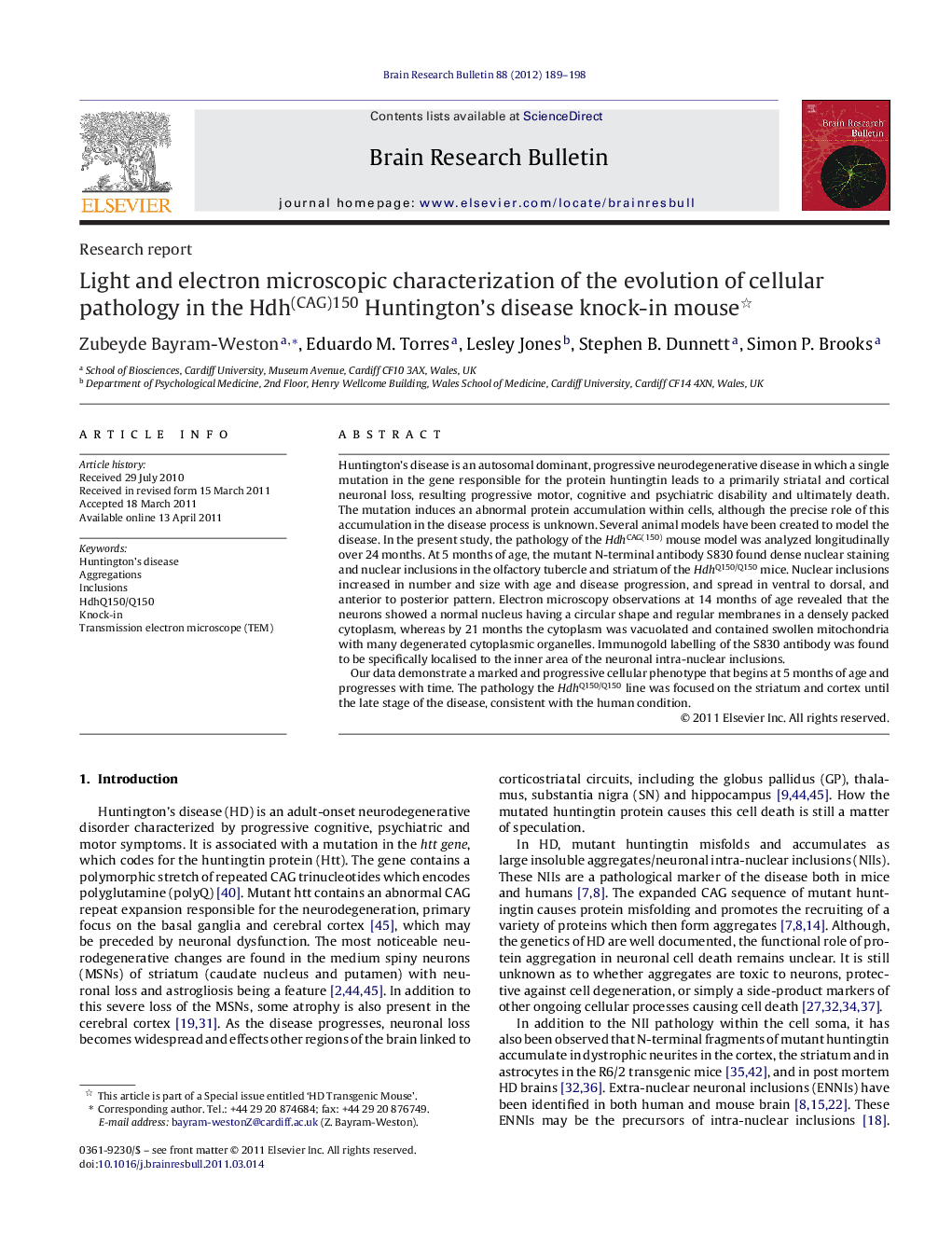| کد مقاله | کد نشریه | سال انتشار | مقاله انگلیسی | نسخه تمام متن |
|---|---|---|---|---|
| 4319079 | 1613269 | 2012 | 10 صفحه PDF | دانلود رایگان |

Huntington's disease is an autosomal dominant, progressive neurodegenerative disease in which a single mutation in the gene responsible for the protein huntingtin leads to a primarily striatal and cortical neuronal loss, resulting progressive motor, cognitive and psychiatric disability and ultimately death. The mutation induces an abnormal protein accumulation within cells, although the precise role of this accumulation in the disease process is unknown. Several animal models have been created to model the disease. In the present study, the pathology of the HdhCAG(150) mouse model was analyzed longitudinally over 24 months. At 5 months of age, the mutant N-terminal antibody S830 found dense nuclear staining and nuclear inclusions in the olfactory tubercle and striatum of the HdhQ150/Q150 mice. Nuclear inclusions increased in number and size with age and disease progression, and spread in ventral to dorsal, and anterior to posterior pattern. Electron microscopy observations at 14 months of age revealed that the neurons showed a normal nucleus having a circular shape and regular membranes in a densely packed cytoplasm, whereas by 21 months the cytoplasm was vacuolated and contained swollen mitochondria with many degenerated cytoplasmic organelles. Immunogold labelling of the S830 antibody was found to be specifically localised to the inner area of the neuronal intra-nuclear inclusions.Our data demonstrate a marked and progressive cellular phenotype that begins at 5 months of age and progresses with time. The pathology the HdhQ150/Q150 line was focused on the striatum and cortex until the late stage of the disease, consistent with the human condition.
► The study aimed to characterise the development of disease neuropathology in the Hdh(CAG)150 mouse line.
► Our results demonstrate that diffuse nuclear staining and inclusions are first observed at 5 months and progress with age.
► There was an increased GFAP activity with age both in homozygotes and wildtype animals, however did not differ between genotypes.
► The findings show that the HdhQ150/Q150 mice show cell pathology similar to those obtained from post-mortem brains of HD patients.
Journal: Brain Research Bulletin - Volume 88, Issues 2–3, 1 June 2012, Pages 189–198